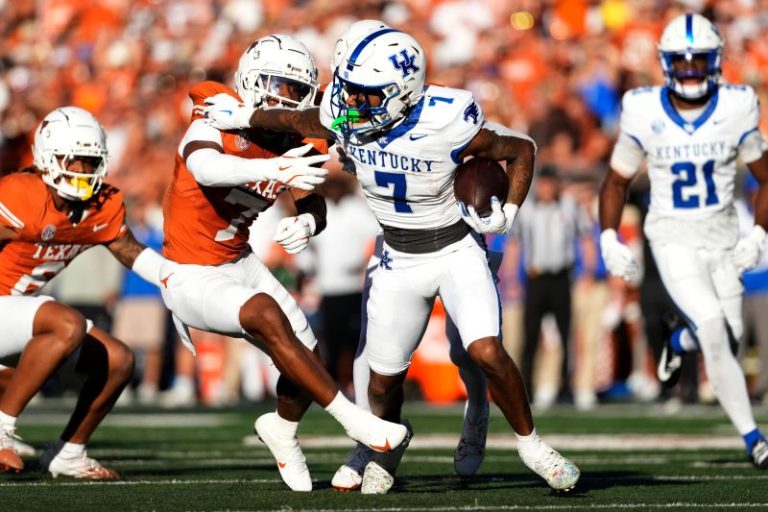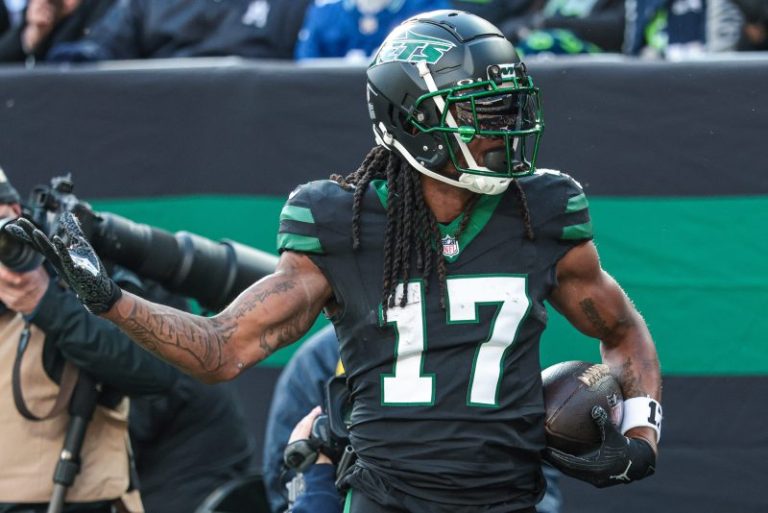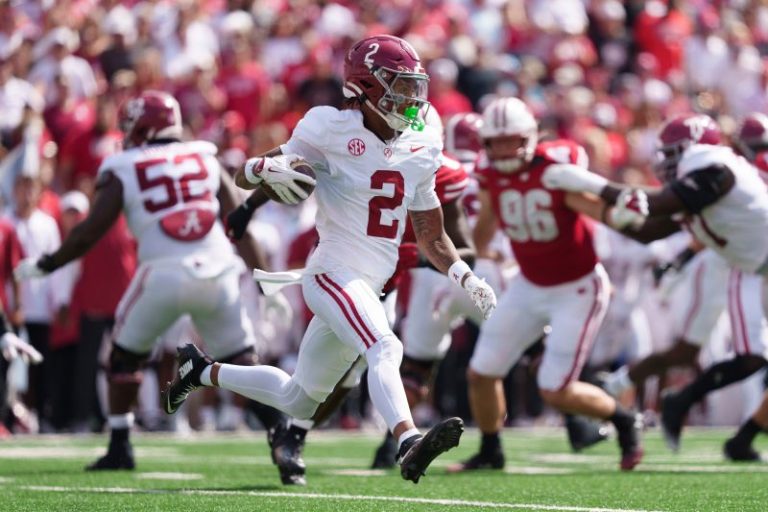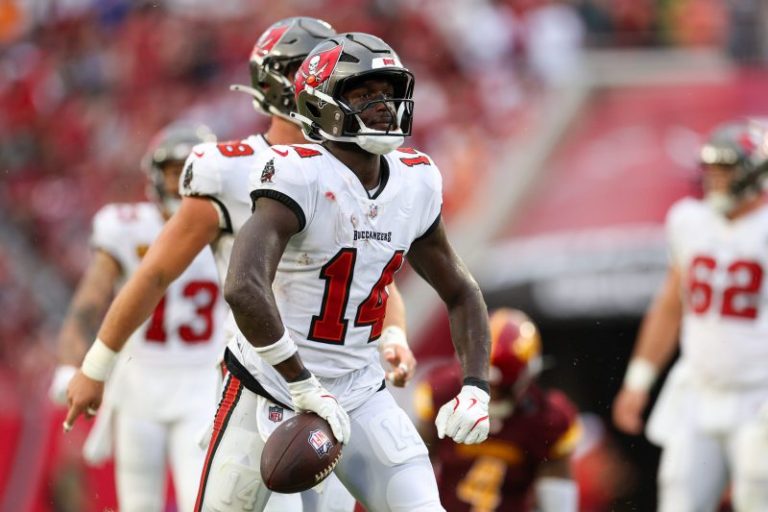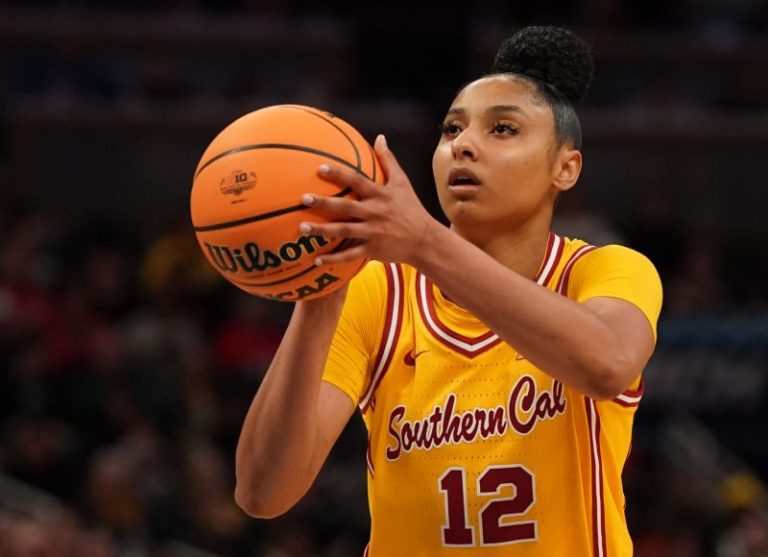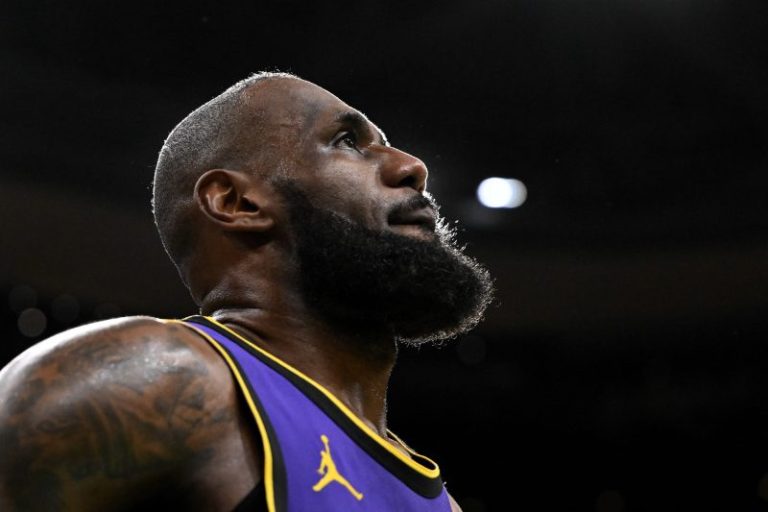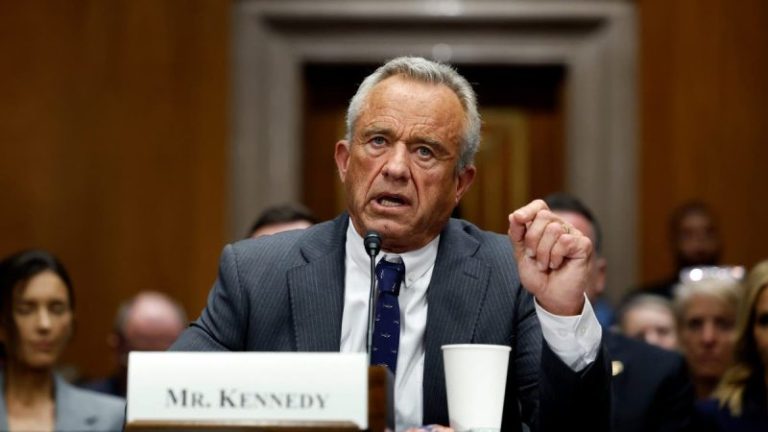The NFL offseason has already kicked off with franchise tags, contract extensions, trades, trade requests and star players released. With hundreds of free agents set to hit the open market, things will continue to heat up.
NFL free agency begins this week, with the legal tampering period opening things up on March 10 at noon ET and the new league year starting Match 12 at 4 p.m. ET.
There are dozens of top players available in free agency who can be difference-makers. Last year, it was Saquon Barkley, Josh Jacobs and Derrick Henry who signed with new franchises and sent shockwaves around the league. Who might be the key free-agent acquisitions of 2025?
Here is a breakdown of one key NFL free agent from all 32 teams set to hit the open market.
Top NFL free agents: One key player for every team
Tennessee Titans: DT Sebastian Joseph-Day
Plenty of the focus in Tennessee is on the No. 1 overall pick in the draft, but the Titans and new general manager Mike Borgonzi have a fair amount of cap space to work with. Joseph-Day is a veteran run-stuffer who pairs well with 6-foot-4, 366-pound T’Vondre Sweat. Jeffery Simmons adds to a stout front that can’t afford to lose a veteran like Joseph-Day to spell Sweat and Simmons for stretches.
Cleveland Browns: RB Nick Chubb
There’s a likelihood the Browns will select a quarterback with the No. 2 pick in the draft, but with Deshaun Watson’s albatross contract and injury looming over the team, Chubb remains the face of the franchise along with Myles Garrett. He struggled at times returning from a brutal knee injury, but with a healthy offseason under his belt it’s possible that his elite and efficient production returns.
New York Giants: WR Darius Slayton
Slayton has been mentioned often in trade rumors to contenders over the last two years. He posted more than 700 receiving yards in four of his first five seasons, leading the Giants each time. The 28-year-old provides the ability to stretch the field. A trait most of the other top free-agent receivers who are north of 30 years old and not quite burners at this stage can bring to the table.
New England Patriots: CB Jonathan Jones
The Patriots have the most cap space of all 32 teams and are expected to be very active. Jones has proven to be a versatile corner with the ability to play in the slot and the perimeter since signing with New England as an undrafted free agent. Entering year ten, he brings a valuable veteran presence to any locker room. With Travis Hunter a possible draft choice for the Pats, Jones could be on the outside looking in.
Jacksonville Jaguars: G Brandon Scherff
The Jaguars are tied with the Packers and Seahawks with the fewest unrestricted free agents with just 10 players apiece. Scherff is in the latter stage of his career, but the former No. 5 overall pick remains a capable starter in the trenches.
Las Vegas Raiders: LB Robert Spillane
An argument can be made for defensive end Malcolm Koonce here, but Spillane is one of the steadiest linebackers in the league. He finished inside the top five in both tackles and snaps in 2024 and is elite in run defense. The former Steeler brings tenacity to any unit as a legitimate every-down linebacker.
New York Jets: CB D.J. Reed
Reed is among the top 10 free agents overall. Aaron Rodgers and Davante Adams are also on the list of Jets free agents. They can be considered here, but Reed is more likely to land a long-term contract. He’s excelled opposite of Sauce Gardner. He allowed a 57% completion rate and only two touchdowns in coverage this season. He’s arguably the top corner in free agency and should have a robust market for his services.
Carolina Panthers: WR Diontae Johnson
Johnson bounced around four teams in 2024 and finished the year with the Ravens, who claimed him off of waivers after the Texans waived him. It was a tumultuous year for the 28-year-old, but he showed during his seven games in Carolina that he could still produce at a high level. He’s among the top 10 free-agent wide receivers in 2025.
New Orleans Saints: CB Paulson Adebo
The Saints have an undeniably adverse cap dilemma this offseason. Edge rusher Chase Young should be noted here but Adebo was playing like a lockdown corner before breaking his femur and ending his season early. With Marshon Lattimore traded to Washington, the Saints have a glaring hole in the secondary.
Chicago Bears: OL Teven Jenkins
Jenkins has been terrific when he’s on the field, but he’s struggled to stay healthy throughout his first four seasons in the NFL. Many will point to Keenan Allen, but the Bears clearly need to protect their franchise quarterback, Caleb Williams, better in 2025 and beyond. He lined up at left guard exclusively in 2024 after playing multiple spots along the line. New Bears head coach Ben Johnson will be keen on developing the big boys up front, which has been already exhibited with two trades this offseason with the acquisitions of All-Pro guard Joe Thuney from the Chiefs and Jonah Jackson from the Rams.
San Francisco 49ers: CB Charvarius Ward
The 49ers are focused on clearing cap space to extend Brock Purdy this offseason. This was evident when they traded Deebo Samuel to Washington during the combine. Ward is an elite lockdown corner who finished as a second-team All-Pro in 2023. He took time away from the field after the death of his daughter in 2024, but he’s not far removed from elite play. He provides excellent press-man coverage and finished third in coverage grade among all corners in 2023, per PFF.
Dallas Cowboys: EDGE DeMarcus Lawrence
With the Cowboys placing the franchise tag on Osa Odighizuwa, the veteran edge rusher Demarcus Lawrence gets bumped up. He will be 33 next month but he’s proven to still be a disruptive force off the edge 11 seasons in. He suffered a season-ending Lisfranc injury in Week 4, but posted three sacks, a forced fumble, four tackles for loss and five QB hits before the injury. He’s one year removed from grading as the eighth overall edge rusher per PFF.
Miami Dolphins: S Jevon Holland
Miami has a league-high 29 unrestricted free agents. Among them is Holland, a former second-round pick who just turned 25. He finished with a career-low 64 tackles in 2024 but has proven productive when schemed up to blitz. He’s the top free-agent safety and is entering his prime. He will be in high demand.
Indianapolis Colts: G Will Fries
The Colts have had one of the most underappreciated offensive lines in recent years, opening up holes for Jonathan Taylor to run through and Fries has been a part of that. He was approaching elite status before fracturing his tibia in Week 5. He will be healthy entering 2025 and can boost any team looking to improve their hog mollies.
Atlanta Falcons: C Drew Dalman
Staying in the trenches, you won’t find many better than center Drew Dallman. Center has been an overlooked position, but the connection to the quarterback is undeniable. Dallman is a bully in the run game and was graded fourth-overall at the position in 2024.
Arizona Cardinals: G Will Hernandez
Hernandez has found a home in the desert and has been a solid performer recently. It took some time but he’s lived up to his second-round pedigree. He excels as a pass blocker and would provide stability to many offensive line rooms.
Cincinnati Bengals: CB Mike Hilton
Wide receiver Tee Higgins would be here but the Bengals chose to franchise tag the receiver for the second consecutive season. Hilton is a veteran corner who has solidified himself as one of the best in the slot in the NFL. It’s a prime defensive position, and with the emergence of elite slot receivers across the league, many contenders will be eager to acquire the veteran with playoff experience.
Seattle Seahawks: LB Ernest Jones
Jones was traded twice in 2024. First, it was from the Rams to the Titans before the regular season and then he was shipped off to Seattle before the trade deadline. He’s a former third-round pick with pass-rush skills and is an elite run-stopper. He’s finished top 15 in total tackles the last two seasons and graded as the fifth overall linebacker in 2023 per PFF.
Tampa Bay Buccaneers: WR Chris Godwin
Godwin suffered a season-ending ankle dislocation in late October, but is expected to be ready for the start of the 2025 season. He was on pace for 121 receptions, 1,399 yards and 12 touchdowns. He’s one of the most consistent receivers in the NFL. Godwin will be 29 this season and trails only Mike Evans in every significant statistical receiving category in Buccaneers’ franchise history. He is the best free-agent receiver under the age of 30.
Denver Broncos: DT D.J. Jones
Jones is a veteran interior defensive lineman and was a significant piece of Denver’s finish as the third-best run defense in terms of yards per game allowed in 2024. He can also be disruptive in pass-rush situations.
Pittsburgh Steelers: RB Najee Harris
The Steelers have quite a few free agents who are steady contributors. Quarterbacks Justin Fields and Russell Wilson are notably available, but with one of the signal callers presumably re-signing, running back Najee Harris becomes a key. He rushed for more than 1,000 yards in four straight seasons, the only back to do so since he entered the league. He has not missed a game, suiting up for 68 regular-season games and two playoff games. He’s the third player in the last 20 years to have 1,000 rushing yards in each of his first four NFL seasons joining Adrian Peterson and Chris Johnson.
Los Angeles Chargers: OLB Khalil Mack
In a light free-agent class, Mack is the best pass rusher available. Even at 34 years old, the former No. 5 overall pick remains a force. He’s enjoying a late-career resurgence. He had 88 QB pressures in 2023, his highest mark since 2016. He graded as the fifth-best edge rusher in 2024, according to PFF. He can significantly impact a contender despite a decrease in snaps.
Green Bay Packers: C Josh Myers
Myers is a former second-round pick from 2021. He suffered a leg injury in the Packers’ playoff loss, but it’s been reported he avoided a significant injury. He is arguably the second-best center in free agency behind Dalman.
Minnesota Vikings: QB Sam Darnold
With Darnold not slapped with the franchise tag, he becomes the top free-agent quarterback on the market. He threw 35 touchdowns and 12 interceptions while leading the Vikings to a 14-3 record. He had a career year before Minnesota’s wild-card loss. The former No. 3 overall pick in 2018 is just 28 years old, and with multiple QB-needy teams and a weak draft class at the position, he should be a hot commodity.
Houston Texans: WR Stefon Diggs
Diggs is another veteran coming off a season-ending injury. He tore his ACL in Week 8 and will turn 32 next season. He’s been one of the most reliable receivers over the last decade, finishing with over 1,000 receiving yards in six straight seasons before 2024. Many contenders with thin wide receiver rooms will be interested in his services but Tank Dell’s devastating knee injury makes for a return to Houston plausible.
Los Angeles Rams: WR Demarcus Robinson
The Rams handled their most important pending free agent earlier in the offseason when they extended tackle Alaric Jackson. This bumps Robinson up the list after the team informed Cooper Kupp they would trade him during the offseason. For the Rams to comfortably move on from Kupp, they must fill the void he leaves. The veteran Robinson would do that after he spent the last two years with the team. He’s coming off his best season, and with Tutu Atwell re-signed before free agency, the team can use another reliable receiver alongside Puka Nacua.
Baltimore Ravens: OL Patrick Mekari
With left tackle Ronnie Stanley agreeing to a contract extension before free agency, do-it-all offensive lineman Patrick Mekari becomes a hot name available. He played nearly every snap at left guard for Baltimore and was strong in protection and run-blocking for two-time MVP Lamar Jackson.
Detroit Lions: CB Carlton Davis III
Davis was acquired via trade before the 2024 season to boost Detroit’s secondary and delivered much-needed stability. He joined a long list of injured Lions late in the season, but before that he ranked inside the top 20 of PFF’s overall defensive grade among cornerbacks. He’s a physical corner, strong against the run and can step into the No. 1 cornerback role on any defense he steps on the field with.
Washington Commanders: EDGE Dante Fowler Jr.
The 49ers sent Deebo Samuel to Washington for a fifth-round pick, which helps fill the hole left by wide receivers Dyami Brown, Olimade Zaccheaus, Noah Brown and Jamison Crowder, who are all free agents. The Commanders have plenty of cap space to improve the offense around Jayden Daniels further, but it will be key for them to bring back any of their top contributors on defense. Fowler led Washington with 10.5 sacks in 2024. The wheels are already turning with the return of Bobby Wagner to prop up a defense that struggled immensely.
Buffalo Bills: CB Rasul Douglas
GM Brandon Beane and head coach Sean McDermott have built an excellent core on the offensive and defensive lines. Amari Cooper is a player many would have in this spot over Douglas, but the receiver will be 31 in June and his role isn’t as crucial to the team’s success with Joe Brady’s offense leaning on the line and the running game. Douglas has been a staple in the secondary since arriving at the 2023 trade deadline. He’s an impact player and key for the Bills defense who often meets the league’s best quarterbacks every year in the postseason.
Kansas City Chiefs: WR DeAndre Hopkins
The Chiefs opted to franchise tag guard Trey Smith, one of the top free agents who would hit the open market. There was a case for Nick Bolton, but he has agreed to re-sign. Hopkins, Mecole Hardman, JuJu Smith-Schuster and Justin Watson are unrestricted free agents. Marquise ‘Hollywood’ Brown has agreed to stay on a one-year deal, Rashee Rice will return and Xavier Worthy was a bright spot. However, Rice still faces a possible suspension for his involvement in a multi-vehicle accident. Hopkins could be a viable option for many contenders on a team-friendly ‘prove it’ deal.
Philadelphia Eagles: EDGE Josh Sweat
The defending champs have a handful of key players set to hit the market who will be highly coveted, but GM Howie Roseman has been a wizard at managing the team’s cap space. Linebacker Zack Baun was one of those players and has agreed to stay. Baun graded as the top overall linebacker in the NFL per PFF in 2024 and earned first-team All-Pro honors. With Baun’s future secured, next up is another guy who fit perfectly in Vic Fangio’s system. Sweat led the Eagles with eight sacks and capped it off with 2.5 sacks in the Super Bowl 59 victory. He’s one of the top pass rushers on the market.
All the NFL news on and off the field. Sign up for USA TODAY’s 4th and Monday newsletter.
This post appeared first on USA TODAY



